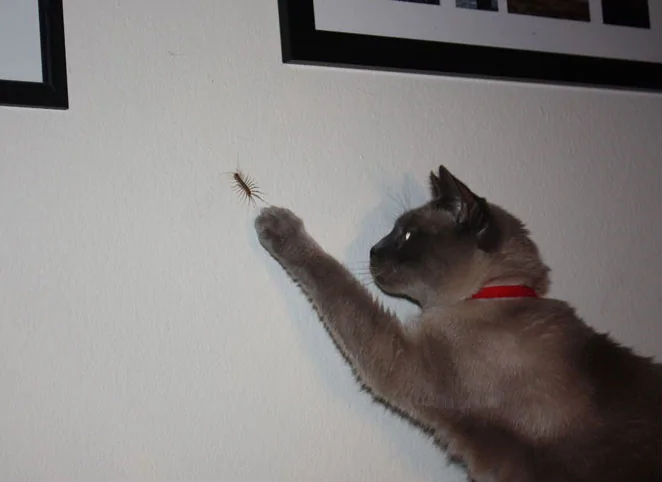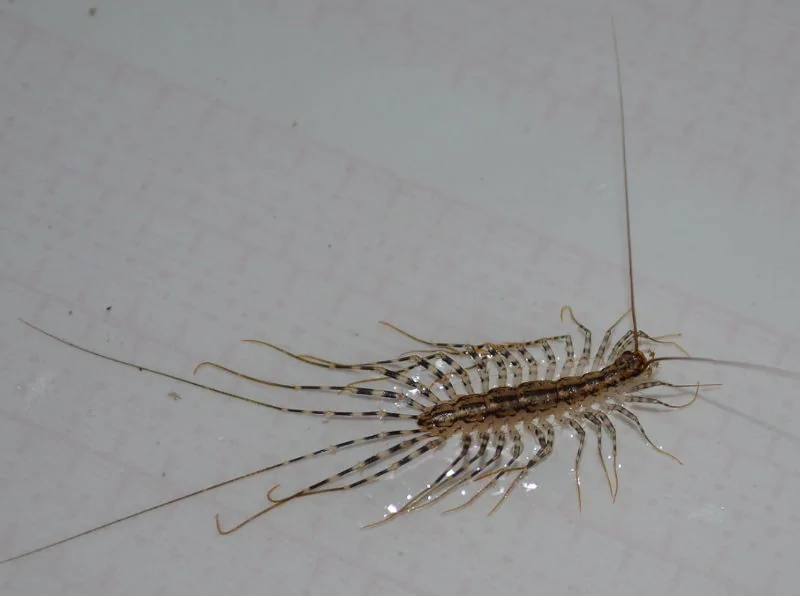If you see an insect around your home, your first instinct is probably to stomp it with anything you can get your hands on—and for good reason. Some of them sting you painfully and even fatally because they contain horrible chemicals.
The creepies are the ones that give you the worst feelings; those tiny, frightful creatures with so many legs typically make you want to squish them to death right away.
But now that you’ve read this, you might be apprehensive about killing those ominous-looking centipedes the next time you see them skulking in your toilet.
It can be challenging to resist the urge to squash centipedes when you see them crawling around the house. You may get quite a shock from centipedes. But after hearing how helpful they have been around the house, you might just want to say “thank you” by not killing them in the future.
It turns out that those squirmy, swiftly moving creatures have been defending your home from other tiny insects.
There are some unusual centipedes around the house that are a little bit shorter than their wormy cousins and have about 20 legs wrapped around their bodies.
These tiny creatures have protected your home from pests like cockroaches, spiders, silverfish, bedbugs, and ants by acting as invisible pest controllers. Their voracious appetite causes them to almost devour every arthropod they find around the house.

Although centipedes are the good guys, this doesn’t mean you should just throw open your doors and let them in in droves; rather, it just means you should let the one or two you may find around the house off the hook the next time they visit as a show of gratitude.
They might make a little noise when discovered, especially if young children or even adults find them disgusting and filthy. But rather than simply squashing them, send them outside to eat some leaves or let them go on their own.
Refrain from squashing every bug you find inside, including spiders, to prevent the risk of releasing hundreds of tiny baby spiders into your home. Realistically, you don’t want to be there.
Centipedes are also not that dangerous in reality. They are merely weak, little creatures with barely enough strength to cause serious harm, aside from terrifying you.
If you consider the fact that they don’t actually spread germs throughout the house like other insects do, it will further convince you that they are actually the nice guys.
Even the centipedes shouldn’t frighten you because they are essentially non-lethal. But when it comes to a few others, we can’t really say the same. These insects cause a great deal of horrible diseases, which are very dangerous and may result in death without proper medical care.
Really, you should keep an eye out for those. Here are a few of the dangerous insects you should hope to never see indoors.
As their name implies, bullet ants’ bites leave you feeling as though you’ve been shot. So you should try to avoid getting bitten. The Paraguayan and Nicaraguan jungles are home to one of the largest ant species.
It’s not the adult botfly that’s the problem, but its larvae, which are internal parasites of many animals, including humans. The female lays her eggs beneath the skin, and as the larvae grow, they burrow deeper beneath the skin, causing an infection that significantly alters the tissue of the skin.
Parents have reported feeling the larvae scuttling around inside of their skin.

Fleas: Since they feed on blood, flea bites can itch, irritate, and occasionally even infect the skin.
Fire ants: These notorious stingers can repeatedly sting an intruder, resulting in uncomfortable white pustules that may remain on the skin for weeks. There are more than 295 different species of ants. A few of them release toxic venom that some people may react to allergically.
It is possible that up to 12,000 fatalities each year are caused by the trypanosome cruzi parasite, which the kissing bug is known for spreading by biting its victims’ lips.
The largest hornets are Giant Japanese Hornets, which can grow up to 2 inches long and have a deadly sting that kills about 40 people a year.
Tsetse flies: It is estimated that 500,000 fatalities on the African continent are attributable to sleeping sickness brought on by tsetse flies’ bites.
Killer Bees: Because of their enormous numbers, killer bees frequently attack violently and in overwhelming numbers, which frequently proves fatal.
Driver ants: These ants have powerful mandibles, which enable them to strike with great force. They might kill several animals in a single raid. Additionally to biting humans, they also attack other insects.
Mosquitoes: Regarded as the deadliest insects and possibly the deadliest organisms on earth, mosquitoes are believed to be the root of up to 1 million annual fatalities brought on by diseases like encephalitis, West Nile virus, malaria, and yellow fever.

